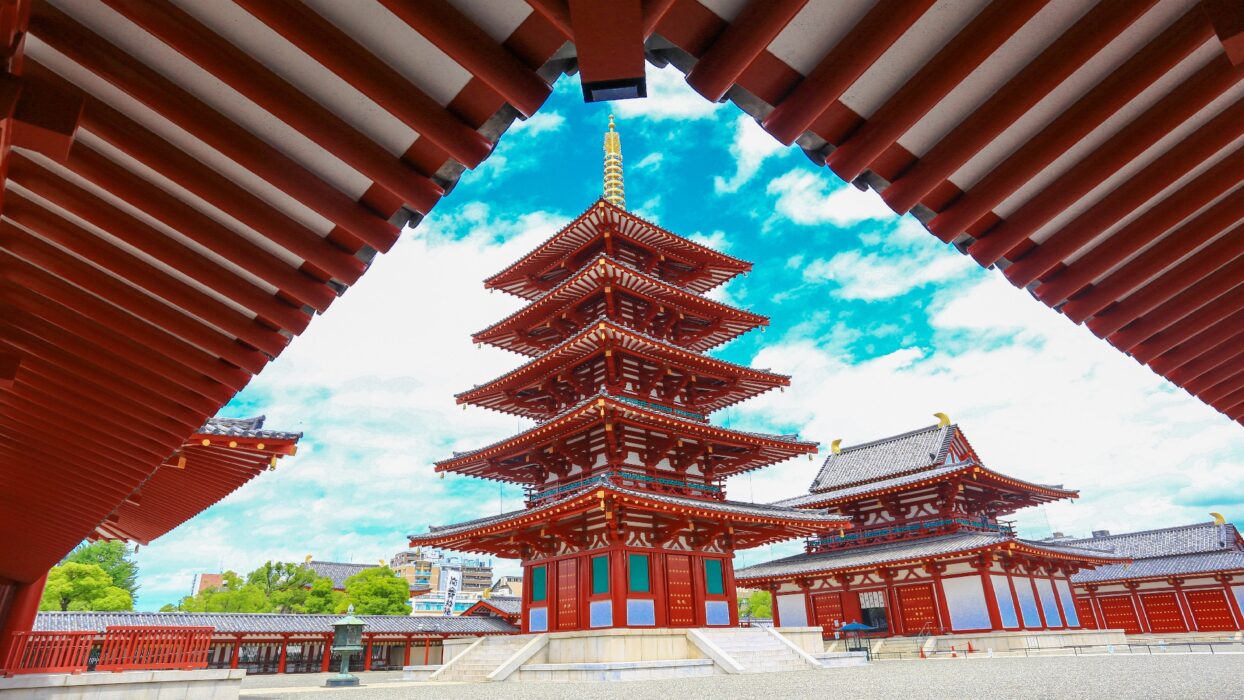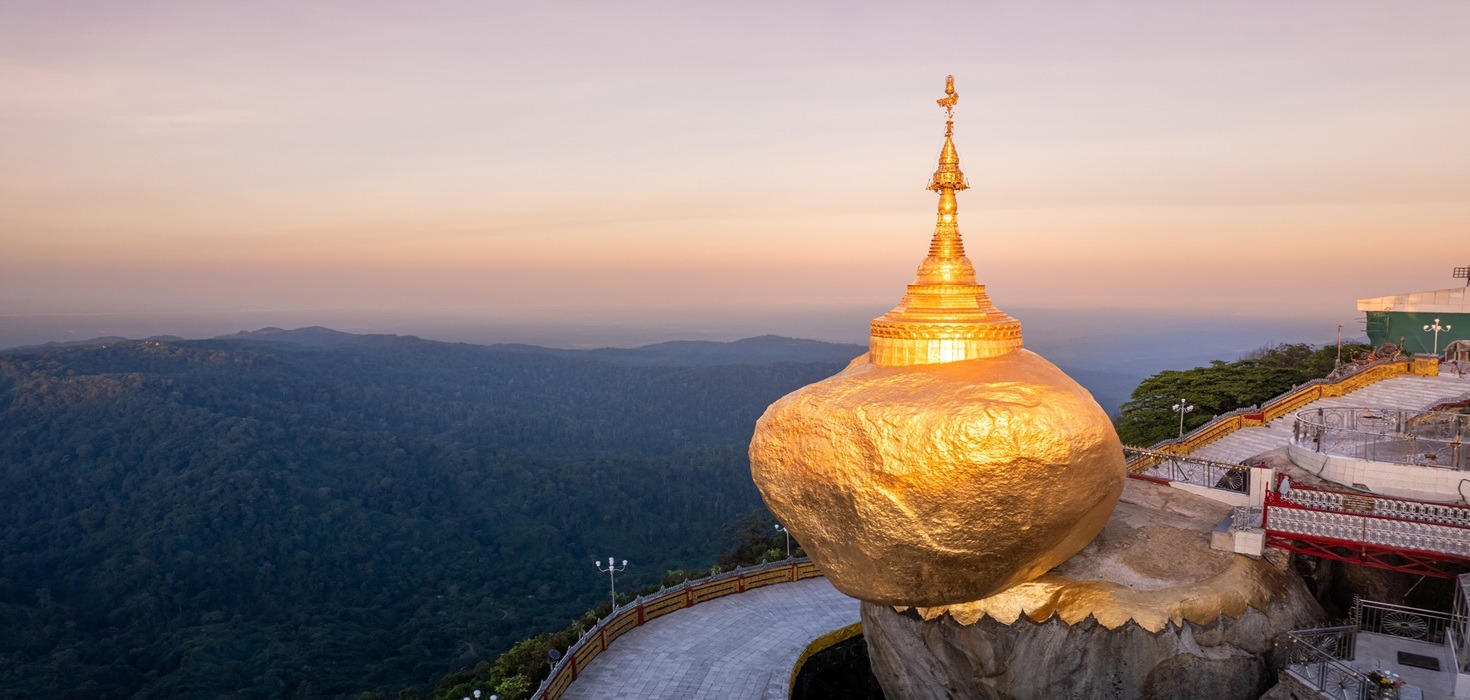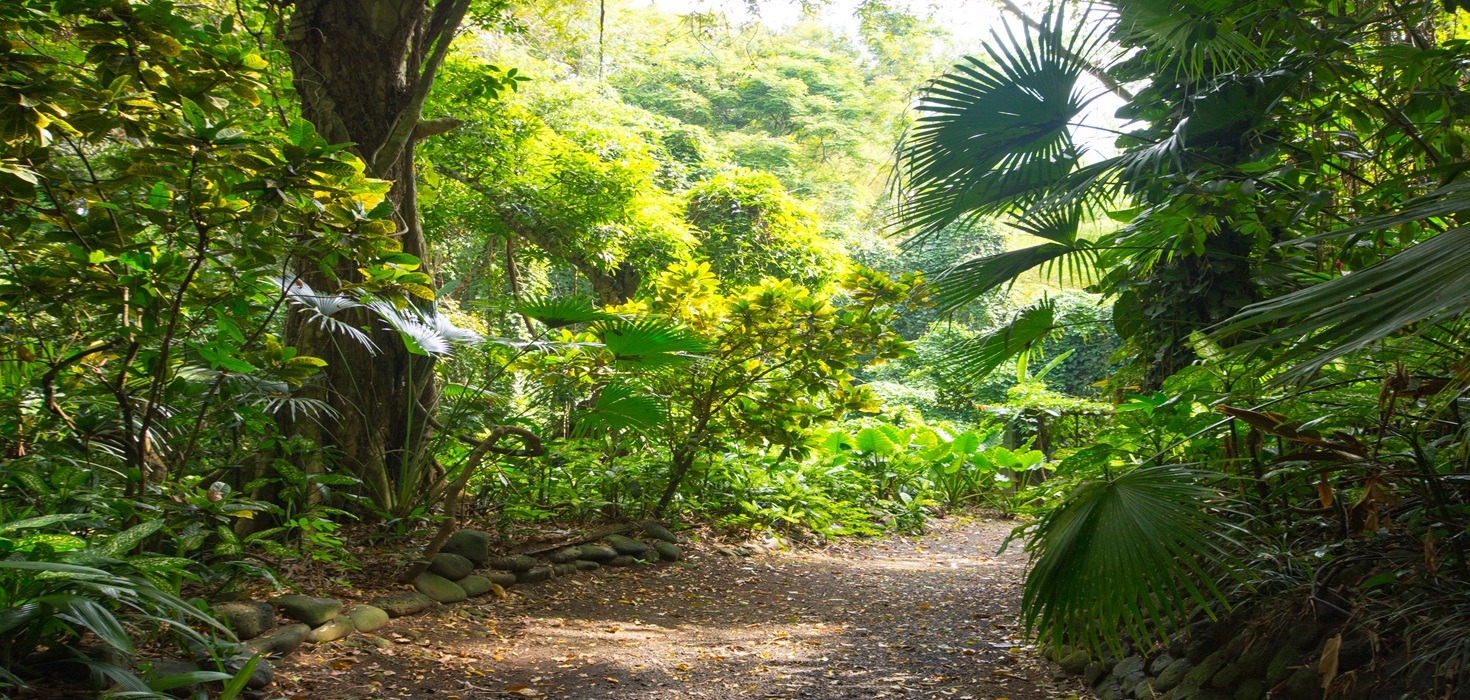Introduction
Ryoanji Temple, nestled in the serene outskirts of Kyoto, is more than just a historical site; it’s a sanctuary for the soul. Famous for its iconic rock garden, this Zen temple offers a unique blend of meditation, tea culture, and tranquility that draws visitors from around the globe. Whether you’re seeking a moment of peace or a deeper understanding of Zen Buddhism, Ryoanji serves as a perfect backdrop for introspection and relaxation. With its lush gardens and calming atmosphere, it invites you to leave the hustle and bustle of daily life behind and immerse yourself in a world where simplicity reigns supreme.
Discovering Ryoanji Temple: A Zen Oasis in Kyoto
Stepping into Ryoanji Temple is like stepping into a painting, where every brushstroke tells a story. Established in the late 15th century, this temple is a significant part of Kyoto’s Zen history. Originally built as a villa for a powerful nobleman, it was later transformed into a Zen temple, embodying the principles of Zen Buddhism. The temple’s architecture is a stunning representation of simplicity and elegance, with wooden structures that harmonize beautifully with the surrounding nature.
The true gem of Ryoanji is its rock garden, a masterpiece that has captivated the hearts of many, including notable visitors such as the famous Zen master Dogen. This garden features 15 rocks arranged in a sea of white gravel, designed to evoke a sense of calm and contemplation. The arrangement of the rocks is said to symbolize the harmony of nature, and no matter where you stand, you can only see 14 of them at a time, inviting you to ponder the unseen. This clever design encourages meditation and reflection, making it a cornerstone of the temple’s allure. For those planning a visit, don’t forget to check out the Ryoanji Temple Visiting Hours and Best Times to ensure you catch the garden at its most serene.
The Art of Zen Meditation at Ryoanji
At Ryoanji Temple, the practice of Zen meditation is seamlessly woven into the fabric of daily life. The tranquil environment encourages both beginners and seasoned practitioners to explore mindfulness in a profound way. The garden’s stillness offers the perfect setting for meditation, allowing you to connect with your inner self amidst the gentle rustle of leaves and the soft chirping of birds.
For those new to meditation, finding a quiet spot in the garden can significantly enhance your experience. Consider settling near the pond, where the reflection of the surrounding trees creates a peaceful atmosphere. Experienced practitioners might enjoy the secluded corners of the garden, where they can immerse themselves in deeper meditation practices. Ryoanji also offers guided meditation sessions, perfect for those looking to cultivate their mindfulness skills. If you’re curious about the relationship between meditation and tea, be sure to explore the Zen Tea Experience at Ryoanji Temple for a unique blend of both practices.
Savoring Tranquility: The Kyoto Tea Ceremony Experience
The tea ceremony in Kyoto is not just about drinking tea; it’s a ritual steeped in Zen philosophy, emphasizing harmony, respect, purity, and tranquility. At Ryoanji Temple, this tradition is celebrated with a unique twist, allowing visitors to engage with the cultural significance of tea in a serene setting. The act of preparing and enjoying tea becomes a meditative practice, encouraging mindfulness and appreciation for the moment.
As you sip on matcha, take a moment to reflect on the meticulous process that goes into each cup. Nearby tea houses offer a variety of tea experiences, from traditional ceremonies to modern interpretations. Each visit is an opportunity to deepen your understanding of Japanese tea culture. For those eager to enhance their experience, consider participating in a tea ceremony at one of the local tea houses. You can find more information about this tranquil experience in our guide on a Tranquil Day of Tea at Ryoan-ji.
Crafting a Perfect Day at Ryoanji: Itinerary Ideas
Planning your visit to Ryoanji Temple? Get ready for a day filled with serenity, mindfulness, and delightful experiences. Here’s a suggested itinerary that combines meditation, tea ceremonies, and a touch of Kyoto’s cultural richness.
Morning: Zen Meditation and Exploration
Start your day early to soak in the peaceful atmosphere of Ryoanji Temple. Arrive just as the temple opens to enjoy the tranquility before the crowds arrive. Begin with a guided meditation session offered at the temple. This is a fantastic opportunity for both beginners and seasoned meditators to immerse themselves in Zen practices. After the session, take a leisurely stroll through the rock garden, allowing the stillness to wash over you.
Don’t forget to snap a few photos of the iconic rock formations as they sit serenely in the white gravel. The morning light casts beautiful shadows, making it an ideal time for Ryoanji photography. For more information on the best times to visit, check out our guide on Ryoanji Temple Visiting Hours and Best Times.
Midday: Zen Tea Ceremony
After your meditative morning, it’s time to indulge in the Kyoto tea ceremony. Head to one of the nearby tea houses where you can participate in a traditional tea ceremony. This experience is not just about sipping matcha; it’s about appreciating the art of tea preparation and the tranquility that comes with it. As you savor the rich flavors, reflect on the connection between tea and mindfulness.
For those looking to enhance this experience, consider participating in a Zen Tea Experience at Ryoanji Temple. This combines the beauty of the garden with the ritual of tea, creating a truly immersive cultural experience. Learn more about this unique offering in our article on Zen Tea Experience at Ryoanji Temple.
Afternoon: Cultural Exploration and Relaxation
Once you’ve enjoyed your tea, take some time to explore the other parts of the temple grounds. Visit the charming pond and the surrounding gardens, where you can find more peaceful spots for reflection. If you’re feeling adventurous, consider renting a bicycle to explore the nearby attractions, such as the picturesque Arashiyama Bamboo Grove or the historic Ninna-ji Temple.
As you cycle through Kyoto, you’ll encounter stunning landscapes and quaint shops selling local crafts. Don’t miss out on tasting some delicious Kyoto-style tofu dishes at a local eatery. These meals pair wonderfully with the Zen philosophy you’ve embraced throughout the day.
Evening: Sunset Serenity
As the sun begins to set, return to Ryoanji Temple for one last visit to the rock garden. The evening light creates a magical atmosphere, casting warm hues over the gravel and rocks. This is the perfect time to reflect on your day and the experiences you’ve had.
Before you leave, take a moment to sit quietly and absorb the serenity around you. Whether you’re contemplating your next adventure or simply enjoying the moment, the peaceful ambiance of Ryoanji will linger in your heart long after you’ve departed.
Seasonal Splendor: Visiting Ryoanji Throughout the Year
No matter the season, Ryoanji Temple offers a unique experience that reflects the beauty of nature in Kyoto. Each time of year brings its own charm, making it worthwhile to visit multiple times.
Spring: Cherry Blossoms in Full Bloom
Spring is a magical time at Ryoanji, as the cherry blossoms burst into bloom. The delicate pink flowers create a stunning contrast against the tranquil white gravel of the rock garden. This season is perfect for photography enthusiasts and anyone looking to experience the beauty of nature. Be sure to check out our guide on Experience Cherry Blossoms at Ryoan-ji Temple for tips on the best viewing spots.
Summer: Lush Greenery and Serenity
As summer arrives, the gardens around Ryoanji become lush and vibrant. The vibrant greens provide a refreshing backdrop for meditation and contemplation. Early mornings are particularly serene, offering a cool breeze and the sound of chirping birds. It’s a perfect time to enjoy a quiet tea ceremony while surrounded by nature.
Autumn: A Canvas of Warm Colors
Autumn transforms Ryoanji into a canvas of warm reds, oranges, and yellows. The falling leaves create a picturesque scene, inviting visitors to take leisurely walks through the gardens. This season is ideal for photography, as the vibrant foliage reflects beautifully in the pond. Don’t miss the chance to capture the seasonal beauty—check out our article on Ryoanji Temple Rock Garden and Cherry Blossoms for more insights.
Winter: A Quiet Retreat
Winter at Ryoanji offers a completely different experience. The gardens are often dusted with snow, creating a serene and quiet atmosphere. This is the perfect time for introspection and solitude. Bundle up and enjoy a peaceful walk through the temple grounds, where the beauty of the snow-covered rocks provides a stunning contrast to the stillness of the season.
The Philosophical Underpinnings of Zen Gardens
Ryoanji Temple’s rock garden is not just an aesthetic masterpiece; it embodies the principles of Zen philosophy. Each element in the garden has a purpose, inviting visitors to engage in mindfulness and reflection.
Symbolism in Design
The arrangement of rocks and gravel in the Ryoanji garden is a reflection of nature’s harmony. The 15 rocks are intentionally placed to create a sense of balance and tranquility. The fact that you can only see 14 rocks at any given time encourages visitors to contemplate the unseen, fostering a deeper connection with the garden and its meaning.
Mindfulness and Meditation
The design of the rock garden serves as a tool for meditation. The simplicity of the garden allows the mind to focus, making it an ideal setting for practicing Zen mindfulness. As you sit quietly, you may find that your thoughts begin to settle, revealing a sense of clarity and peace.
For those interested in exploring the artistic interpretations of Zen gardens, our guide on Discover Ryoanji Temple Rock Garden provides insights into the artistic expressions influenced by this tranquil space.
Practical Information for Ryoanji Visitors
Planning your visit to Ryoanji Temple? Here’s everything you need to know to make your experience smooth and enjoyable.
Opening Hours and Accessibility
Ryoanji Temple is open daily, with varying hours depending on the season. Typically, the temple opens early in the morning and closes in the late afternoon. To avoid crowds, try to visit during weekdays or early mornings. For specific hours, check our guide on Ryoanji Temple Visiting Hours and Best Times.
Transportation Options
Getting to Ryoanji is convenient, with several public transportation options available. The nearest bus stop is just a short walk away, making it easily accessible for travelers. For those driving, parking is available nearby, although it can fill up quickly during peak seasons.
Visitor Etiquette
While visiting Ryoanji Temple, it’s important to respect the sacred space. Maintain a quiet demeanor, especially in meditation areas, and be mindful of others seeking tranquility. Photography is allowed in certain areas, but always be considerate of fellow visitors.
Culinary Delights: Exploring Kyoto’s Local Cuisine
Your journey through Ryoanji is incomplete without indulging in Kyoto’s local cuisine. The city is famous for its traditional dishes that perfectly complement the Zen experience.
Kyoto-Style Tofu
Tofu is a staple in Kyoto, and you’ll find numerous eateries serving delicious Kyoto-style tofu dishes. These meals are often light yet flavorful, making them a perfect choice after a day of meditation and tea. Look for restaurants that offer tofu kaiseki, a multi-course meal that highlights the delicate flavors of this local ingredient.
Tea-Infused Dishes
Don’t miss out on trying tea-infused dishes, which incorporate matcha or other local teas into their recipes. From matcha desserts to savory dishes, these culinary creations offer a unique twist on traditional Japanese cuisine. Explore local eateries near Ryoanji for an authentic dining experience.
Cultural Events and Festivals in Kyoto
Kyoto is rich in cultural events and festivals that celebrate Zen traditions and tea ceremonies. Time your visit to Ryoanji to coincide with these special occasions for an even more enriching experience.
Zen Retreats and Workshops
Throughout the year, Ryoanji Temple hosts various Zen retreats and workshops, offering visitors a chance to deepen their practice. These events often include guided meditation, tea ceremonies, and discussions on Zen philosophy. Participating in one of these retreats can enhance your understanding of Zen culture while providing a unique opportunity to connect with like-minded individuals.
Seasonal Festivals
Kyoto’s seasonal festivals are a vibrant celebration of culture and tradition. From cherry blossom festivals in spring to autumn foliage events, these gatherings often feature performances, food stalls, and cultural exhibitions. Engaging in these festivities while visiting Ryoanji adds a lively touch to your serene experience.
Frequently Asked Questions about Ryoanji
Curious about Ryoanji Temple? Here are some common questions visitors often ask:
What is the history of Ryoanji Temple?
Ryoanji Temple was established in the late 15th century and has since become a significant part of Kyoto’s Zen history. Originally a villa for a nobleman, it was transformed into a Zen temple, embodying the principles of Zen Buddhism.
Can I meditate at Ryoanji Temple?
Absolutely! Ryoanji offers a tranquil environment perfect for meditation. Whether you participate in a guided session or find a quiet spot in the garden, you’ll find ample opportunities to connect with your inner self.
Are there any visitor guidelines I should know?
Yes! Visitors are encouraged to maintain a peaceful atmosphere while exploring the temple. Be respectful of the sacred space and fellow visitors. Photography is allowed in designated areas, but always be considerate of others.
Safety and Health Guidelines for Visitors
Your safety and well-being are important while visiting Ryoanji Temple. Here are some tips to keep in mind:
Health Guidelines
Maintain proper hygiene by washing your hands regularly and using hand sanitizer when needed. If you’re feeling unwell, consider postponing your visit to ensure the safety of others.
Etiquette During Meditation and Tea Ceremonies
During meditation sessions and tea ceremonies, silence your phone and maintain a respectful demeanor. Follow the guidance of instructors and be mindful of your surroundings to create a peaceful environment for everyone.
By following these guidelines, you’ll contribute to the serene atmosphere of Ryoanji Temple, allowing yourself and others to fully embrace the tranquility of the experience.
Conclusion
Visiting Ryoanji Temple is more than just a trip to a historical site; it’s an opportunity to connect with the essence of Zen culture, indulge in the art of tea, and find peace amidst nature. Whether you’re meditating in the rock garden, savoring a cup of matcha, or exploring the seasonal beauty of Kyoto, Ryoanji invites you to embrace tranquility in every moment. So pack your bags, book your stay on Agoda, and get ready for an unforgettable experience in the heart of Kyoto!










